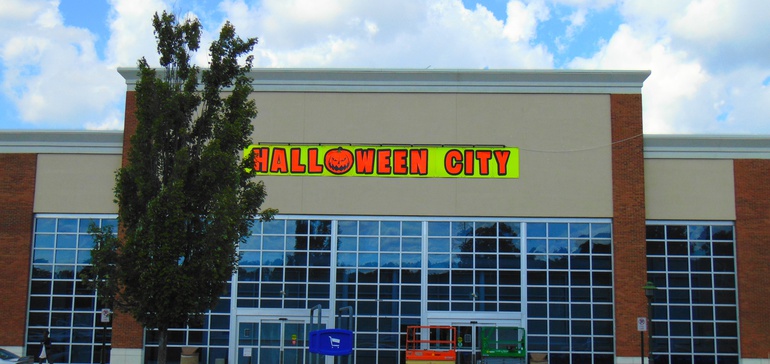Flickr
Ben Unglesbee|Source: www.retaildive.com, August 2021
Dive Brief:
- Part City plans to open 80 to 100 Halloween City pop-up stores this year, the retailer’s President and CEO Bradley Weston told analysts last week.
- At the top end, that figure would be a fourfold increase from last year’s 25 stores. At the time, that was a dramatic reduction compared to past years made in response to the pandemic and digital shopping trends.
- Against the 250 Halloween City stores the retailer opened in 2019, Party City’s brick-and-mortar plans for this season are still far below pre-pandemic levels. “We’re ready for any level of demand as we are … still in a volatile and dynamic time,” Weston said of the Halloween season, according to a Seeking Alpha transcript.
Dive Insight:
Party City had difficulty planning for Halloween even before COVID-19 reshaped the holiday, perhaps in long-lasting ways. In 2019, the retailer was blindsided by a sudden surge in online shopping — and not at its e-commerce store. Sales that season fell precipitously, a big blow for a retailer that historically depends on Halloween sales for 20% of its domestic revenue.
Against that backdrop, plus the rise of social distancing and nervousness around a fall COVID-19 surge last year, Party City scaled back its pop-up stores dramatically for the holiday in 2020. At the same time, the retailer added four to five additional employees per store compared to historical staffing to support anticipated growth in omnichannel services like curbside pickup.
Party City beat the low expectations for Halloween 2020, nearly closing the sales gap with 2019 — a pre-pandemic but disappointing year. Still, the company surpassed its own forecasts (not something Party City could say in 2019) and posted a 30.2% increase in curbside, delivery and BOPIS sales.
With Halloween still more than two months away, and the pandemic taking another turn with the delta variant spreading fast among the unvaccinated in the U.S., the season once again is cast in uncertainty. Party City’s store plans are a sign it expects more physical traffic and in-person shopping. However, executives declined to share specific estimates for the season.
“There’s a lot of factors obviously that influence Halloween,” Weston said. “We have a lot more learnings and customer insights and data relative to prior years. We have a new merchandising and store teams that had built over the last 18 months that are ready to — that are executing well, leading up to Halloween and excited to get going with this really fun and important season.”
The advent of COVID-19 vaccines and some modest return to normalcy this year have acted as a crucial relief valve for Party City, which has built its entire business on the kinds of social gatherings that can spread the coronavirus. The company posted a year-over-year increase in revenue of 110.4%, bringing it to $535.7 million, while retail sales were up 138.9%.
“Broadly, Party City continues to benefit from the return of social gatherings, parties, and celebrations as the economy continues to reopen and vaccines roll out,” Telsey Advisory Group analysts led by Joe Feldman said in a recent research note. Feldman also pointed to Party City’s initiatives on its products and stores.
On the latter front, Feldman said in a note earlier this year that the Telsey analyst team was “wowed by Party City’s NextGen store,” which featured a dedicated checkout for balloons, revamped merchandising, new signage, lower aisle height, de-cluttered stores and “a well-organized party assortment.”
To date Party City’s next-generation format accounts for 57 stores and is expected to reach 98 next-gen stores by year-end, Weston said, adding that the next-gen stores have been averaging a mid-single-digit increase in sales compared to their control stores.

